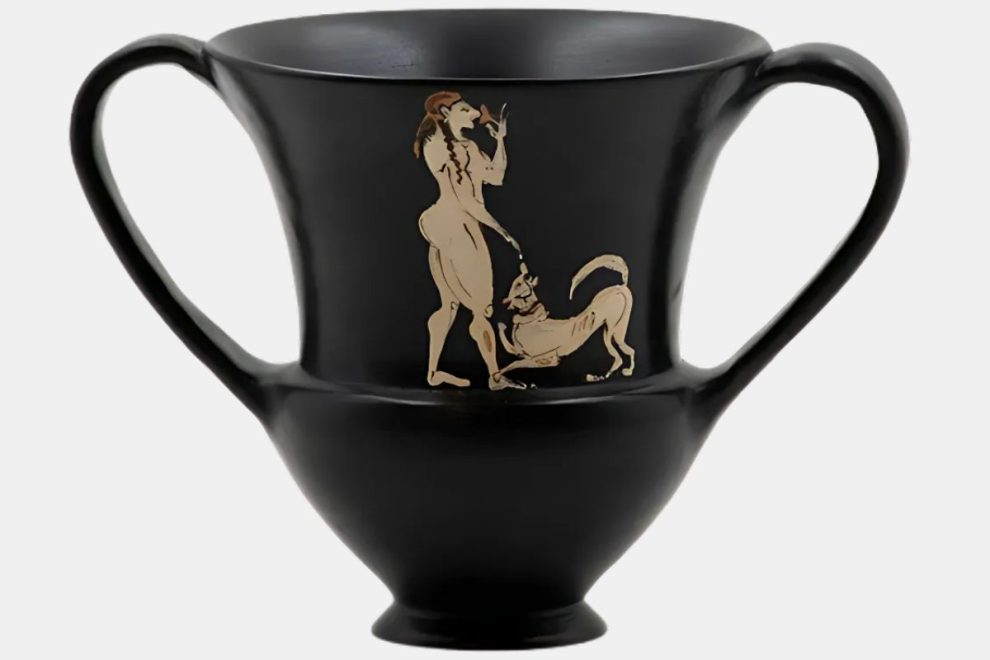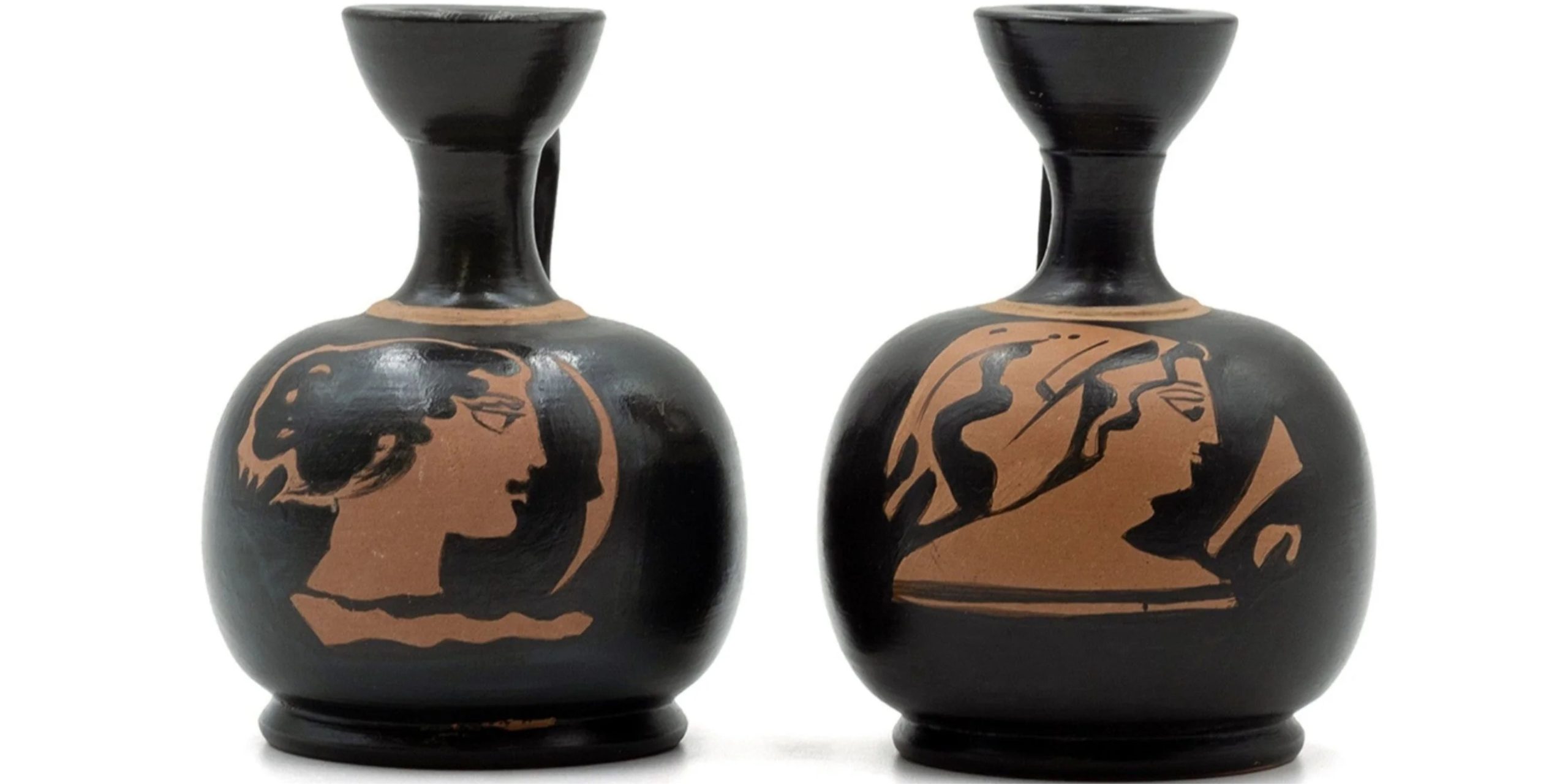
Key Highlights
- For centuries, the assumption has been that men produced most ancient Greek pottery.
- Sarah Murray, a classical archaeologist at the University of Toronto, challenges this long-held belief.
- She suggests women may have been primarily responsible for pottery created during ancient Greece’s Early Iron Age.
- Intricate geometric patterns, often found on pottery of this era, suggest a link with weaving, a traditionally female-dominated craft.
- Murray’s research raises an important question: To what extent have modern biases shaped our understanding of the past?
Historians have shown great interest in this civilization for a long time. One interesting topic to study is gender roles and how they affected different parts of society, especially pottery production. Greek women pottery has recently become a focus of research, showing that women may have had a much bigger role in ancient Greek pottery making than we once believed.
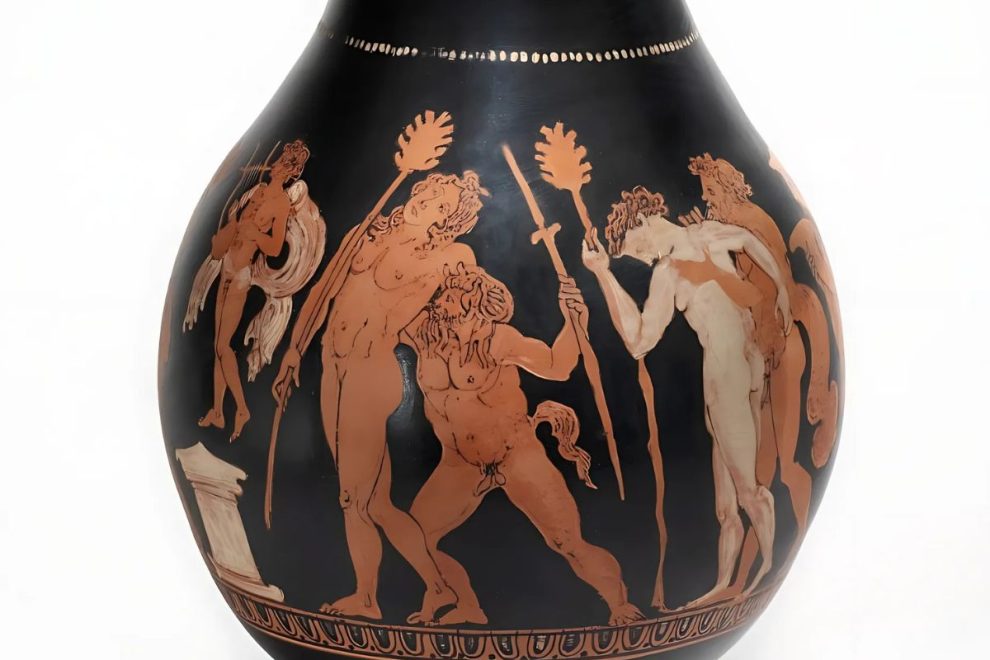
The Role of Women in Ancient Greek Pottery
The bright world of ancient Greek pottery is more than just beautiful art. These pots had important uses and showed us how people lived, what they believed, and how their society worked. For a long time, researchers thought that mainly male artisans made these pieces, based on old views of ancient Greek society. But now, new evidence is making us rethink this idea. Could it be that women had a bigger role in creating this famous art than we first thought? Many signs tell us this could be true, especially in certain times in ancient Greek history. This interesting new thought has opened up fresh ideas for archaeologists and historians. They want to learn more about how gender roles worked in the ancient world.
The Historical Context of Pottery Making in Ancient Greece
To understand the important roles women played in pottery production, it helps to know about ancient Greek history. During the Archaic period (around 800–500 BCE), city-states grew, trade increased, and arts flourished. This was also when black-figure and red-figure pottery styles appeared, showing scenes from myths, daily life, and battles. These artworks, usually linked to male artisans, have influenced how we see ancient Greek art. Before the Archaic period was the Early Iron Age (around 1050–700 BCE). This time is more mysterious because there were few written records. Pottery from this time had bold, complex geometric patterns. This style was different from earlier art. Though often less talked about than the Archaic period, this earlier era allows us to explore the roles of women in pottery production in exciting ways. Because there are few written documents from the Early Iron Age, it’s hard to know how work was divided by gender. Still, this gap lets us look at archaeological findings without the biases seen in later reports.
Evidence of Women’s Contributions to Greek Pottery
There is strong evidence suggesting that women played a big role in making pottery during the Early Iron Age. Many pottery pieces from this time have intricate geometric patterns that look like those found in textiles. This similarity hints that the artists could have been inspired by weaving, a skill connected to women in ancient Greece. It raises the question: were these talented artists expressing the world of textiles, a craft mostly linked to women? Another interesting point is the fingerprint evidence found on old pottery pieces. Studies are still developing, but early results show that these fingerprints could help us know the sex of the artisan. This could mean there were many female potters during the Early Iron Age. This new line of research could greatly change how we see pottery production in ancient Greece. Think about visiting a museum of art and enjoying a collection of ancient Greek vases. You might usually think that men created these pieces. However, if many pots with detailed geometric patterns were actually made by skilled women, it adds even more value to this old art form.
Were Women Officially Recognized as Potters in Ancient Greece?
The status of women in ancient Greece, especially in Athenian society, focused mainly on their roles in the home. Women mainly took care of the household duties like weaving, raising children, and managing tasks at home. Written records often left women out of professional work, especially in crafts like pottery. This has made many think that these fields were only for men. Even though official records don’t show women in these roles, that doesn’t mean they didn’t participate at all. Women might have used pottery as a way to express their creativity, even if no one wrote it down. The limited written history from the Early Iron Age makes it hard to know if women were recognized as potters. It seems likely that making pottery at home was seen as just a home skill, not a job, so it might not have been listed in official papers. This idea makes us think more about how we see and categorize art jobs in times when records are scarce.
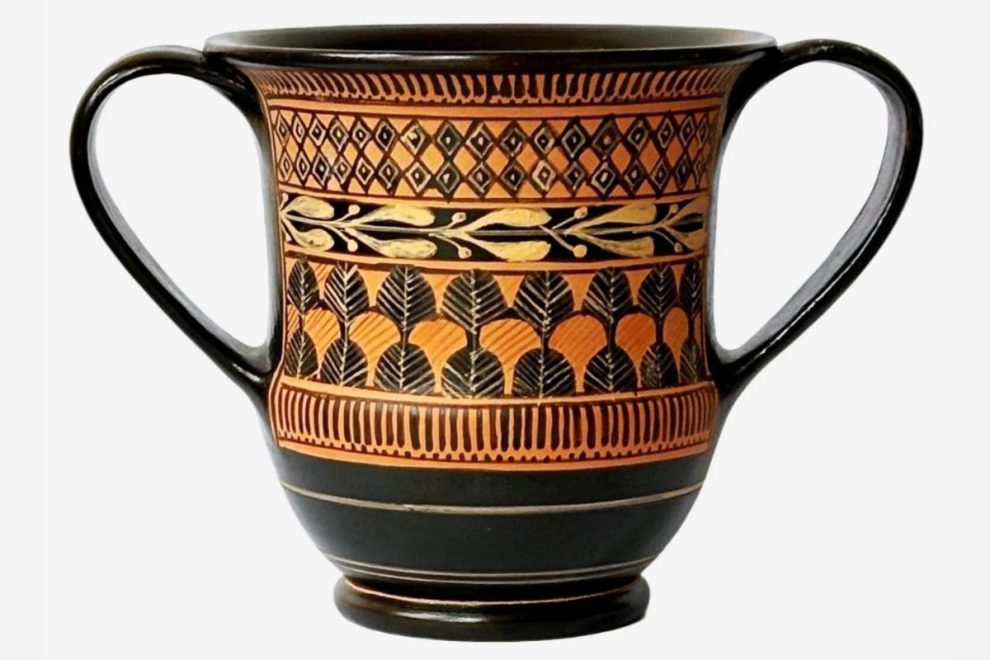
Artistic Techniques and Styles Influenced by Women
Intricate geometric patterns are a big part of Early Iron Age pottery. These patterns may help us understand how women influenced ancient Greek pottery. People usually think that men were the main artisans during this time. However, if we look closely, there are many similarities between these geometric designs and those seen in woven textiles. This suggests a possible link to the crafts that women primarily worked on. It might be that women added artistic features to pottery taken from their daily lives and the world of textiles. This idea is interesting and is backed by archaeological findings. It gives us a new way to think about how art changed and developed in ancient Greece.
The Signature Styles Attributed to Female Artisans
The Geometric art that began during the Early Iron Age (around 900–700 BCE) was a big change from earlier Mycenaean art, which showed realistic images. The new art style moved away from scenes with warriors and chariots. Instead, it focused on abstract designs, detailed geometric patterns, and stylized human figures. This change is often seen as a sign of shifts in society, where there was a new focus on order and symmetry. It also connects interestingly to art linked to women. The detailed geometric patterns in Geometric art are very similar to those found in textiles made mostly by women. Some scholars suggest that women, who were good at weaving, might have significantly influenced this new art style by taking their skills with geometric designs from weaving to pottery. Additionally, the focus on abstract shapes and decorative details in Geometric art relates to the kinds of items women decorated in ancient Greek society, like textiles and pottery. This shows a possible shared sense of beauty between home life and pottery making, which makes the traditional views on gender roles less clear.
Comparing Male and Female Influences on Pottery Designs
As ancient Greece moved into the Classical period (around the 5th-4th centuries BCE), there were more different styles and themes in pottery. Most of this was made by male artisans. Common scenes came from mythology, war, and sports. There were also many images of gods, heroes, and social gatherings. These reflected the interests and values of a society controlled by men. Still, some pottery types and designs showed a link to earlier Geometric art. The use of these lasting patterns, together with scenes from daily life and home traditions, hints that women still played a role in pottery design. Here are some key points to consider:
- Lekythoi: These are slender oil flasks often used in funerals. They usually showed pretty floral designs and pictures of women doing household chores, suggesting a tie to women’s lives.
- White-ground technique: This method allowed artists to add more detail and color. It often featured women in home settings, providing a look into the private lives of ancient Greek women.
- Red-figure pottery: Even though this pottery often showed mythical stories, many types, like drinking cups (kylikes) and water jugs (hydriai), also showed women in everyday tasks.
Are there any Surviving Accounts of Female Potters from Ancient Texts?
Classical texts are our main source of information about the ancient world. However, these texts offer limited information about the lives of women in ancient Greece. They also do not provide much insight into whether women were involved in crafts like pottery. Most of the writings come from male authors, such as Homer, Plato, and Aristotle. These authors mainly share the views and successes of men and often talk about the society and gender roles from their standpoint. It’s important to remember that these texts reflect a specific view. They mainly represent the elite, male citizens of the time. The stories and experiences of women, especially those from lower social classes, are mostly missing from these writings. Because of this lack of documentation, it is not surprising that we do not find names of female potters in classical texts. This does not mean that women potters did not exist. Instead, it highlights the need for us to study women in ancient Greece more critically. We must recognize the biases present in the historical record. Scholars like Sarah Murray from the University of Toronto are now calling for a fresh look at old interpretations to consider new evidence.
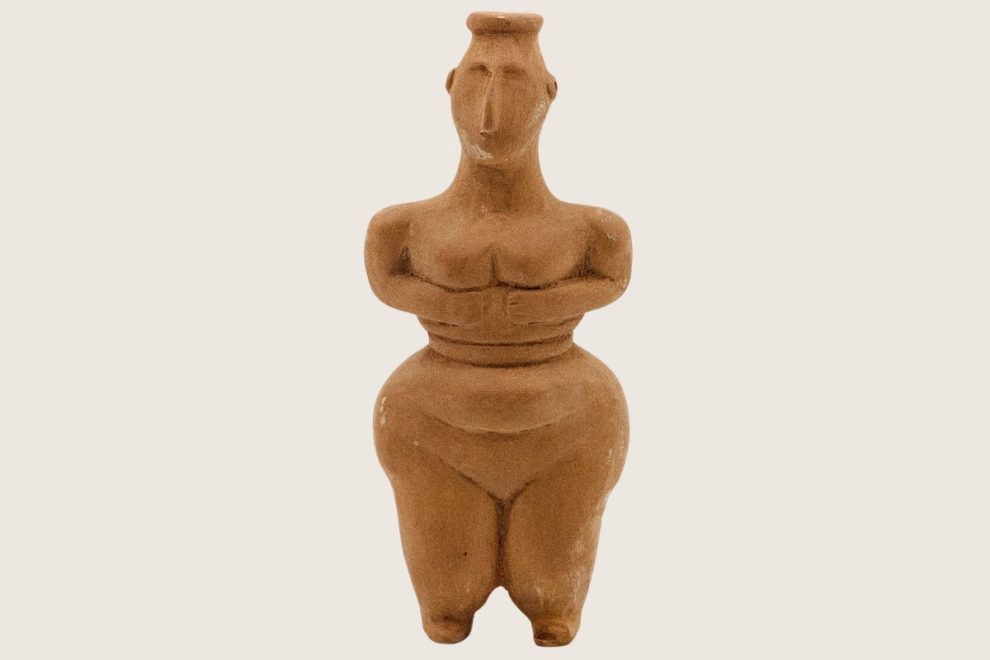
Iconic Female Figures and Mythology in Greek Pottery
Greek mythology has many gods, goddesses, heroes, and monsters. This rich tradition inspired ancient Greek artists, who painted pottery with lively scenes from these stories. Even though male figures often played the main roles, female figures like goddesses, heroines, and nymphs provide a unique look at how ancient Greeks understood femininity and its role in their society. Female figures, such as the powerful goddess Athena in her battle armor and the beautiful Helen of Troy, who caused a great war, were often shown on ancient pottery. These images still draw our attention and make us think about gender roles in ancient Greece.
Depictions of Goddesses and Heroines on Ancient Vases
Ancient Greek mythology has many gods and goddesses who influenced artists, especially vase painters. The goddesses each had their own traits and stories. These characters helped show ideas about femininity, power, and what it means to be human in ancient times. Though many stories focused on male power, female deities also had a strong impact. Goddesses were often shown on all kinds of clay pots, from big storage jars to small drinking cups. Athena, the goddess of wisdom and war, was often depicted fully armed, showing strength and intelligence. Aphrodite, the goddess of love and beauty, was frequently seen with Eros, the god of love, pointing out how important beauty and desire were to the people. Hera, the queen of the gods, usually appeared in proud poses, representing marriage and home life. These images did more than just show goddesses; they offered deeper views of women’s roles in society. For example, a seated woman could portray home life or sadness, but it could also show power and authority, depending on the situation and other figures around her. This hints that understanding ancient images takes careful thought about the culture and social issues at that time.
Interpretations of Feminine Symbols in Pottery Art
In addition to explicit representations of goddesses and heroines, ancient Greek pottery also employed various symbols and motifs associated with feminine principles and domains. These symbols, often interwoven with geometric patterns and narrative scenes, offer subtle yet revealing insights into ancient Greek beliefs about womanhood, fertility, and the cycle of life and death. For example, floral motifs, frequently appearing on pottery, held strong associations with femininity, growth, and regeneration. The pomegranate, with its abundance of seeds, symbolized fertility and abundance, while the ivy, often depicted entwined around trees, represented enduring life and the connection between the earthly and divine realms. Funeral scenes, a prevalent theme on a variety of ceramics, frequently highlighted women’s roles in mourning rituals and their association with the transition between life and death. These scenes often depicted women carrying offerings to the deceased, mourning at gravesides, or preparing bodies for burial, highlighting the importance of women in facilitating passage into the afterlife. Here are some other interpretations of feminine symbols:
Symbol | Interpretation |
Snake | Renewal, rebirth, and the cycle of life, due to its ability to shed its skin. |
Bird | The soul, freedom, and the transition between the earthly and divine realms. |
Butterfly | Transformation, metamorphosis, and the fleeting nature of life. |
The Socio-Economic Impact of Pottery by Women
The effect of pottery made by women goes beyond just art and symbols. It touches the core of ancient Greek society. People often ignore the work of women in favor of men’s roles in politics and war. However, women’s work in making pottery for home and rituals was very important. It helped shape the social and economic world of their time. If women really were the main creators of pottery during the Early Iron Age, as some experts believe, it leads to interesting questions. These questions are about how work was organized, how wealth was shared, and what women’s status was during this time. Looking at how women’s pottery affected society helps us see ancient Greek life more fully.
How Female-Crafted Pottery Shaped Greek Economy
The impact of pottery production in ancient Greece is very important. Pottery was a valuable item. It helped create trade networks, offered jobs, and boosted the economy of many city-states. Large workshops, likely with male artisans, made ceramics for trade and wealthy customers. Meanwhile, making pottery for home use was important for local economies. If women made a lot of pottery in ancient Greece, especially during the Early Iron Age, as some recent studies show, it means they greatly helped their communities’ economic health. Pottery production for household needs, including storage jars, cooking pots, cups, and plates, would have required organized work, possibly within homes or small workshops. Also, finding pottery made by women in burials shows that these items had both practical use and symbolic meaning. This need for pottery in death, just like in life, highlights how essential this craft was in ancient Greek society, cutting across different social classes and stressing the significant socio-economic impact of women’s work.
The Social Significance of Women’s Work in Pottery
Women’s work in pottery was very important in ancient Greece. It showed gender roles and the values of society. From the archaic period to classical antiquity, women were crucial in pottery production. They created detailed geometric patterns and scenes from daily life. By painting vases and making ceramic art, women showed different parts of Athenian society. This revealed the roles and status of women. Recent digs and historical evidence help us see how important women were in the growth of Greek pottery. This gives us a better understanding of the ancient world.
How did the Role of Women in Pottery Evolve Over Time?
The history of gender roles in pottery production during classical antiquity is quite complex. It was shaped by changes in technology, the economy, and social norms. Women played a big part in pottery work during the Early Iron Age. Their roles likely changed as Greece moved into the Archaic and Classical periods. As pottery workshops grew larger and more focused, especially in cities like Athens, more men got involved. They often took over the creation of large pottery pieces and those meant for trade. However, we should not think that women’s involvement simply declined over time. It is likely that women still had important roles in pottery production, even as things changed. They may have focused on making certain types of vessels, using unique decoration methods, or working on different stages of the pottery making process. They could have also operated smaller family-run workshops aimed at local customers. More research, including fingerprint evidence and a closer look at old archaeological records, is key to understanding this complex history better.
Attic Black pottery stands as a powerful testament to the extraordinary capabilities and contributions of women. With unwavering determination and unparalleled artistic vision, these women artisans not only mastered their craft but also became torchbearers of female empowerment. Their achievements in Attic Black pottery serve as an inspiration to generations, highlighting the transformative power of women in art and dismantling long-held gender stereotypes.
Discover more intriguing articles and delve deeper into the captivating world of pottery in ancient Greece by visiting our website, ATTIC BLACK. Explore a wealth of information, uncover hidden stories, and witness the exquisite craftsmanship that has endured through the ages.

